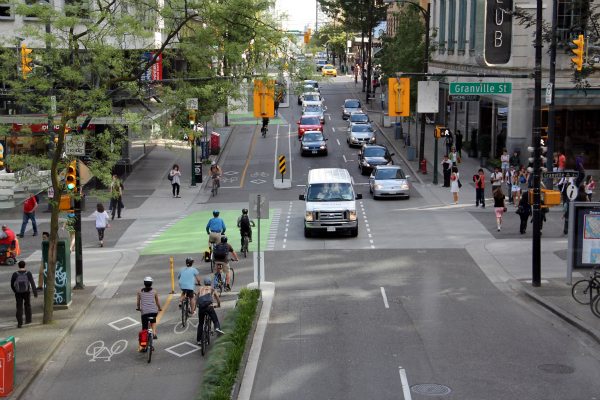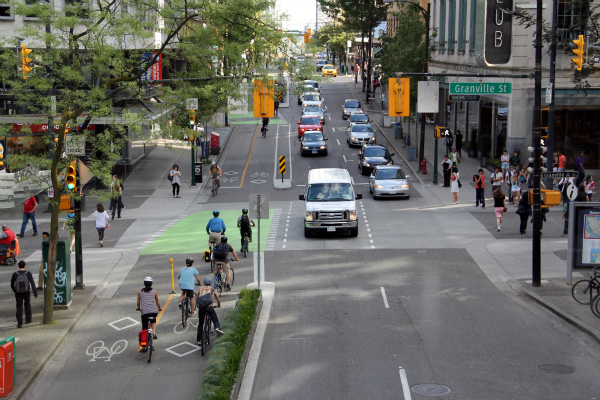
With Gina Raimondo taking such an unexpected turn to the left, there’s a whole lot that’s up in the air for the governor’s race.
Many voices on Rhode Island Future have covered the importance of Raimondo’s signature issue, pension reform. Having a public school secretary as a mother, I’ve never been particularly keen for these types of “reforms”, but I’ve always felt that the best course of action was to grant people one disagrees with the benefit of the doubt. Raimondo seems to be working very hard to prove to us that her reforms did not result from a disdain for workers, but rather a commitment to fiscal restraint.
Very well, let’s have her prove it.
RIDOT may end up investing $30,000-50,000 per parking spot in a parking garage for the Garrahy Judicial Complex. This is a very bad investment. Downcity is covered in parking.
Option 1: The No-Build Option.
My top preference would be not to build this garage with state money. I think that Raimondo can capture the hearts of progressives by finding a better use for the state funding, or she go whole-hog on the fiscal conservative thing and shelve the spending and/or give the taxpayers some of their money back. Honestly, I’d be reasonably happy with either. At least we’re not building a parking structure with state money.
If she wants to double down on her investment strategy for schools, $50,000 is more than a starting teachers’ salary in Providence. There are also plenty of schools that need renovations. I had the luck to work for a year with Americorps at Nathan Bishop Middle School, but the vast majority of Providence’s public schools are in nowhere near the shining shape of that building. And I’m sure plenty of other school districts (Central Falls, Woonsocket, Pawtucket) would have good uses for that money too.
Option 2: Build Something Good.
I also think it would be a good idea to take a page from other cities, and build a marketplace with apartments and offices above it to serve as a bus hub. The “compromise” position on the parking garage is supposed to be to put a bus hub on the first floor, but who wants to take the bus to a parking garage (and who wants to park at a bus hub?). I’ve outlined some examples here.
Option 3: The Benefit of the Doubt
The strongest presentation of the argument for state investment in a parking garage is that it will help us consolidate that huge expanse of surface parking into a vertical structure. This has some merits.
The only way the garage makes sense as a state investment is if it comes with considerable strings. Here are mine:
1. The state can invest the money upfront if it charges the full market value for parking in order to recoup costs, and continues to charge market value to upkeep and maintain the garage after the principal is paid.
2. The parking garage only deserves public money on the merit that it’s an ecological measure to consolidate parking. Therefore, the parking garage must be parking neutral. This means that any spots added by the garage have to be canceled out by surface spots removed. Since removing a surface lot generally means building something on it, and since building can’t just be ordered to happen at the drop of a hat, the state must require garage builders to pay for bonds to maintain greenery on the surface lots until something can be built. This already has precedence in the popularity of Grant’s Block as a no-car space that might have been used for parking. It also has policy precedents in Salt Lake City, Utah, where the city has such requirements for empty lots from demolitions.
3. The garage must have business spaces on the bottom floors. It might be a nice twist to charge slightly above market value for parking in order to offer lower rent to the tenants.
4. If there are any additional spaces needed to be taken beyond the surface lots in Downcity in order to reach parking neutrality, then I would propose taking some from some streets in order to make protected bike lanes with a planted median. These will help reduce the demand for parking, thus making the garage a better investment for those who do use it, and will also green our city by making biking an option for more people. Removing some lanes of a road from car traffic also saves taxpayers longterm on maintenance costs.
5. The garage must be open for 24 hour business. There’s a real problem of some parking being used for daytime use and other parking nighttime use in Downcity, such that even though there are more than enough parking spaces available, they’re not being used rationally so that they can double on their capacity.
6. There should be some decent bike parking in the garage.
Hey, I’m not a fan of pension reform. But I can make my peace with balancing a budget. Let’s horse-trade. The way to show good faith on the idea that pension reform isn’t just a reverse Robin Hood is to put your money where your mouth is.
No more subsidized parking.






